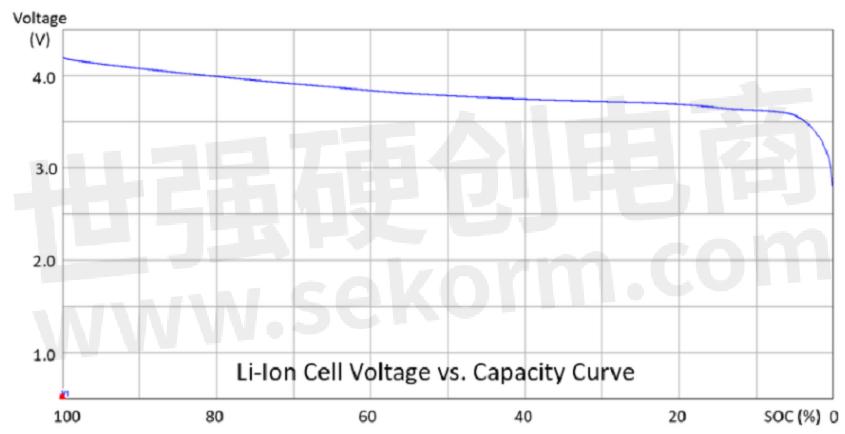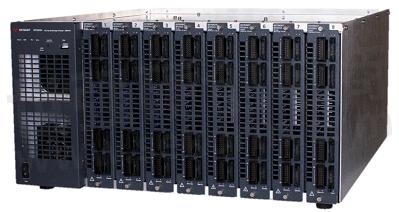Consider Adding a Pre-Charge Step to Your Lithium-Ion Cell Manufacturing Process

Last year Ed Brorein posted an article "The ABCs of Lithium-Ion Cell Manufacturing" (click on title to access) that provides an overview of the lithium-ion cell manufacturing process. In my article I walked through 10 main steps of the manufacturing process, starting with preparing the materials that go into the cell's construction and ending with final testing and grading. While these 10-steps are comprehensive, manufacturers are always looking at ways to enhance their process to better suit their specific needs. One way to consider enhancing the cell manufacturing process is adding a pre-charge step, as illustrated in Figure 1. As shown, pre-charge is a step that takes place before formation.

Figure 1: Adding a pre-charge step to the lithium-ion cell manufacturing process
What is pre-charge? Why add it into the manufacturing process?
Traditionally, after the cell is assembled and filled with electrolyte, the formation step then adds electrical charge to the cell, taking typically on the order of a day to perform. A portion of this charge is consumed to form the solid electrolyte interface layer (or SEI layer) on the surface of the cell's anode. Hence the term formation. A properly formed SEI layer is paramount to a cell's performance and long-term life. Additional electrical charge applied is stored as energy in the cell.
A lithium-ion cell's state of charge (SoC) characteristic is depicted in Figure 2. As expected, the cell's voltage varies with its % SoC. For this lithium ion cell type, the voltage is at 4.2 volts for 100% SoC (fully charged) and drops down to 2.5 volts for 0% SoC (fully discharged). This is not to say there is no charge left in the cell at 0% SoC, as there is a slight amount left. Instead, 0% SoC is defined by the minimum voltage level that the cell can remain at without risk of causing damage. Over-discharging the cell below its minimum voltage can cause internal corrosion and irreversible damage. This makes the cell potentially dangerous to recharge again.
After the step of filling a cell with electrolyte, it becomes electro-chemically active but still does not have any charge. Some time is allotted for the electrolyte to fully soak into the porous active materials of the electrodes, referred to as wetting. After this time however, the filled but uncharged cell may be sitting somewhere near 0 volts and subject to start corroding internally. It is imperative to apply some charge to the cell at this point to prevent this internal corroding from starting. Not enough charge to start forming the SEI layer or charge the cell, but just enough to "pre-charge" the cell to get it up to 2 to 3 volts, to prevent internal corrosion caused by too low of a cell voltage.

Figure 2: One type of lithium ion cell discharge characteristic.
Normally all the cells need to move immediately to formation after filling and wetting to prevent internal corrosion from starting, but this may not be the ideal situation for several reasons:
Formation typically takes on the order of a day to perform.
Formation equipment is typically high power to charge and discharge cells at higher power levels. This is more than what is needed for putting a small initial charge on the cells.
In some cases, the formation equipment may not be well suited for applying charge to cells down near, or slightly below 0 volts.
Having to form the cells right after electrolyte filling and wetting reduces scheduling flexibility.
Adding a pre-charge step before formation may be a better alternative. Pre-charge consists of setting up stations like formation, but with differences:
Pre-charge channels can be lower power, only needing to apply a small charge over a couple of minutes, to bring the cell up to a safe minimum voltage level of 2 to 3 volts.
Being dedicated to performing pre-charge, the equipment can be better tailored to the task, such as charging cells starting at or below 0 volts and optimized for throughput for applying a charge cycle of only minutes, instead of up to a day.
Pre-charge channels can be more economical with the equipment providing many more lower power channels in much less space, making it more cost-effective to process greater numbers of cells all at once.
Pre-charge can provide greater flexibility in the manufacturing process. There is no longer the immediate need to put all the cells through formation after electrolyte filling and wetting. This can provide greater flexibility in scheduling, putting the pre-charged cells through formation when it is opportune to do so.
Using the Keysight BT2200 Charge-Discharge System for Pre-charge:
The Keysight BT2200 Charge-Discharge System is well suited for both pre-charge and formation. The BT2202A or BT2203B mainframe, along with eight BT2204B modules provides 256 6-amp channels. For formation these channels can be connected in parallel for higher power and current as required, depending on the cell size. Individual channels are well suited for applying lower voltage and current typically required for pre-charge. The BT2200 also incorporates other specific capabilities uniquely needed for pre-charge, including operation down to or below 0 volts and short charge cycles, among other things. A BT2200 mainframe and BT2204B modules are pictured in Figure 3.

Figure 3: Keysight BT2200 Mainframe with BT2204B modules
- +1 Like
- Add to Favorites
Recommend
- Keysight Technologies Acquires Quantum Benchmar, Augmenting Keysight‘s Quantum Portfolio
- Keysight First to Gain GCF Approval of Cases for Validating 5G New Radio mmWave Devices in Standalone Mode
- Keysight‘s O-RAN Test Solutions Enable Xilinx to Accelerate Development of Massive MIMO Radio Reference Design
- Keysight and Transphorm Create Power Supply Reference Design that Lowers Product Costs; Speeds Time to Market
- Keysight Massively Parallel Board Test System Selected by LACROIX in Automotive Printed Circuit Board Manufacturing
- Keysight, TIM and JMA Wireless Join Forces to Showcase O-RAN Technology at Mobile World Congress 2021
- Keysight First to Gain OmniAir Qualified Test Equipment Status, Accelerating C-V2X Device Certification
- Keysight Delivers New Solution for Benchmarking 5G End-user Quality of Experience in Indoor Environments
This document is provided by Sekorm Platform for VIP exclusive service. The copyright is owned by Sekorm. Without authorization, any medias, websites or individual are not allowed to reprint. When authorizing the reprint, the link of www.sekorm.com must be indicated.





























































































































































































































































































































































































































































































































































































































































































































































































































































































